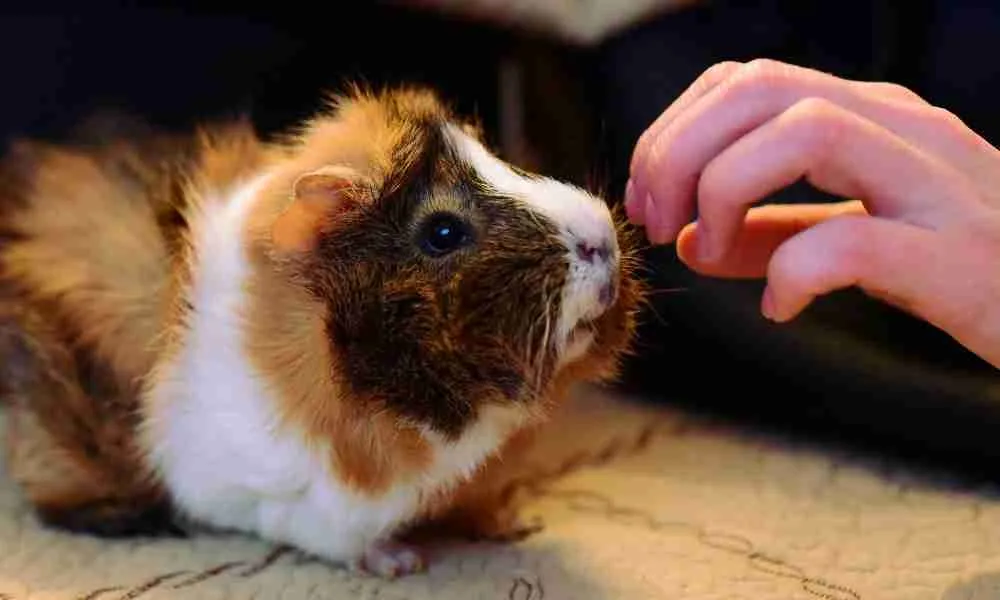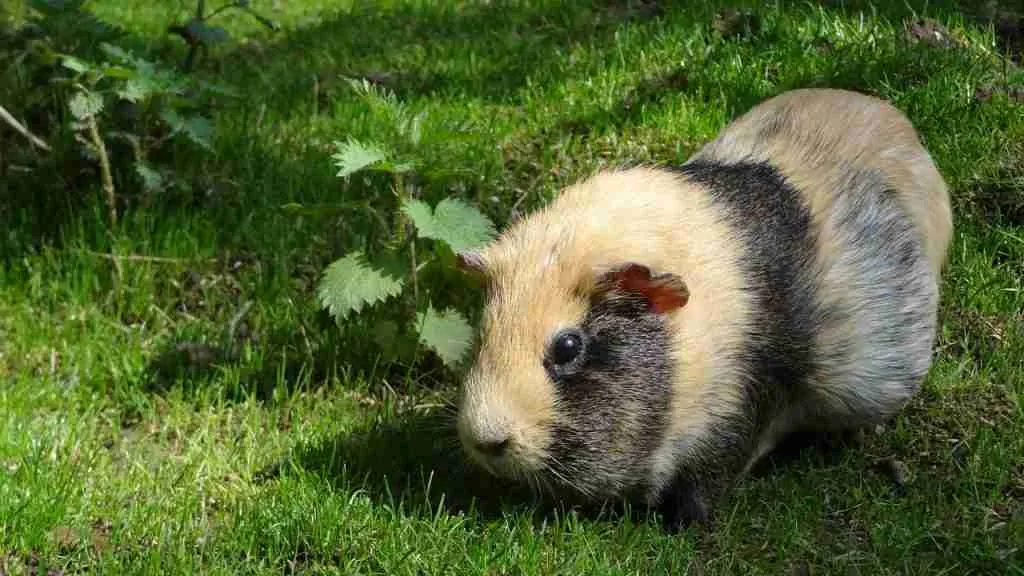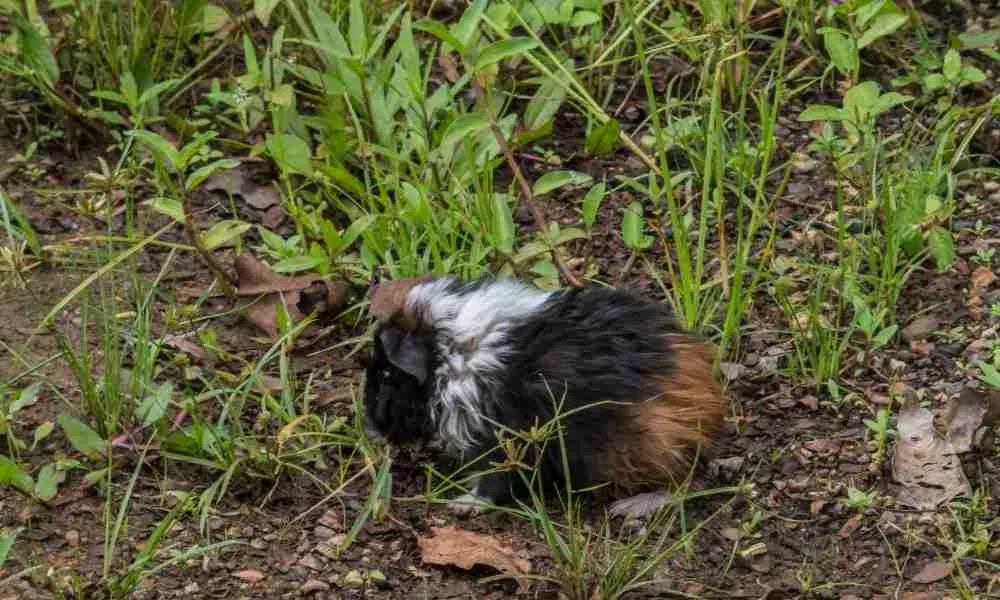Many people in the world today now have two or more domestic cavies in their homes.
Speaking of being domestic animals, does it mean there are no guinea pigs outside captivity? Are guinea pigs extinct in the wild?
Here’s a simple answer – Yes, guinea pigs no longer live in the wild as of 5000 BC.
While the majority of people today keep them as pets, others use them for food. And in some parts of the world, cavies are a source of tourist attraction in zoos.
Now you know that guinea pigs now live among humans and other domestic animals.
I believe the next question that will come to your mind is, “why are guinea pigs extinct in the wild? “
Just keep reading!
Table of Contents
Why Are Guinea Pigs Extinct In the Wild?
There are two major reasons guinea pigs no longer have their habitat in the wild.
First, they make great pets, and secondly, they are a good source of food.
Let’s discuss these two factors:
1. Guinea Pigs Became Domesticated Pets
During the 16th century, the Spanish soldiers that occupied Central and South America took guinea pigs along with them to Europe.
At first, the Europeans considered breeding the domestic cavies for food but later kept them as pets because of the animals’ friendly nature.
As of then, only the wealthy can buy the animals because they were expensive and seen as special creatures.

There was even a report that Queen Elizabeth the First owned some cavies during her reign, thereby making the tiny animals gain fame in Britain.
Presently, guinea pigs have become popular pets across different parts of the world and are commonly loved by children.
Nowadays, it is uncommon for people to breed small, social creatures for just flesh; They are now seen as being important.
2. Guinea Pigs’ Meat As A Food Source
Originally, the cavies were native to South America while living in the wild. But they were commonly used as a source of food during that period and only a few people saw them as pets.

Over 3000 years ago, the Incas started breeding the guinea pigs for food, and also sacrificed them to their gods.
They were part of South American civilization that lived around the Andean mountains from the 13th to 16th century.
But later, the guinea pigs were seen as more than a delicious diet.
RECOMMEND READING: Do They Eat Guinea Pigs In Peru
Where Can You Find Wild Guinea Pigs?
Most wild guinea pigs live in South America, particularly in Brazil, Uruguay, and Argentina.
For example, the Cavia aperea is a species of wild guinea pigs that live in Brazil. They have dark olive-brown furs on the top of their body, yellowish-grey stomachs, and are often 11 inches long.
Like domestic pets, these wild guinea pigs eat plants majorly and move in small groups.
Montane guinea pig (AKA Cavia tschudii) is another species of wild cavies.
They live in the Andes Mountains, are often 9.7 inches long, and their color changes based on different locations.
However, studies have shown that these wild guinea pigs tend to show signs of aggression compared to domestic ones.
Another species of the wild guinea pig is the Cavia Magna, also known as the greater guinea pig.
They live within Brazil and Uruguay and are usually 12.2 inches long weighing 1.4 pounds. But unlike the domestic cavies, Cavia Magna is a solitary animal – they love being alone.
Cavia fulgida, also known as the shiny guinea pig, is another species of guinea pig.
They live in the Atlantic Forests along the coast of Brazil and have a shiny appearance, which might be how they got their name.
READ ALSO: ARE GUINEA PIGS RODENTS?
How Did Guinea Pigs Survive In the Wild?

Due to their small size, guinea pigs are prey animals that are always watchful in the wild.
Of course, they are smart animals too and sometimes make predators run after them as a way of catching fun. Regardless, the cavies’ chances of survival in the wild are lower than those in captivity.
In the area of diet, the wild guinea pigs feed mostly on:
- hay,
- grass,
- leaves,
- flowers,
- other vegetables.
They usually move around in small groups, looking for food and eating together because of their social nature. Moreover, it is easier for large predators to attack a single cavy than when they are in groups.
Wolves, owls, snakes, cats, and even humans prey on wild guinea pigs. As a way of protecting themselves, the cavies dig holes in the ground for hiding.
Some of them even climb rocks as a means of escape while others jump from one tree branch to the other.
READ ALSO: DOES A GUINEA PIG MAKE A GOOD PET?
How Many Guinea Pigs are Left In the World?
As of now, it is difficult to determine the total number of guinea pigs in the world.
They are adorable creatures that are loved by many people, both young and old, and commonly kept as pets.
Nevertheless, we were able to come up with some numbers:
- In 2007, the total number of guinea pig pets in America was 1,362,000 and
- In England, the number was 1million in 2012.
- As of 2010, there were 30 million tiny pets around Europe, and we can guess that guinea pigs are about 3 million.
Understandably, we can now assume that the number of guinea pigs in the world today cannot be less than 5 million.
READ ALSO: DOES GUINEA PIGS BITE?
Final Thoughts
Keep a few points in mind as we’ve come to the concluding part of this article.
Guinea pigs have been extinct in the wild for a long time now. Nowadays, they are commonly kept as pets in homes across different parts of the world.
Wild guinea pigs can be found in South America, especially in Brazil, Uruguay, and Argentina.
To survive in the wild, guinea pigs hide in the holes they’ve made in the ground, climb rocks and feed on plants mainly.
Finally, finding out the number of guinea pigs in the world today is difficult because they reproduce quickly.
